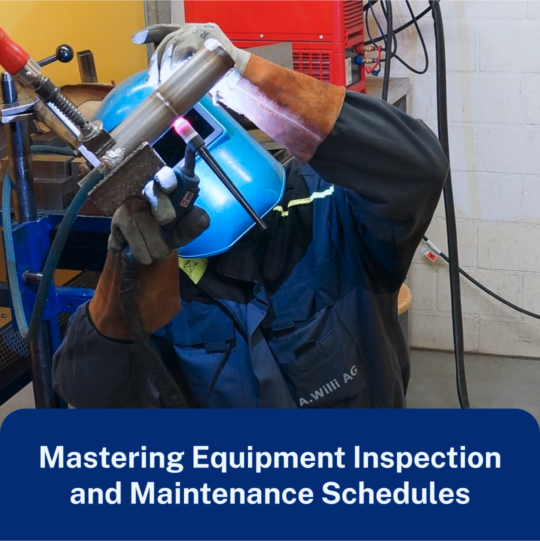In construction and tool rental businesses, the management of equipment inspection and maintenance schedules is important for ensuring operational efficiency, safety, and compliance. Regular inspections act as a proactive measure, serving to identify potential issues in construction equipment and tools before they escalate. By addressing wear and tear, malfunctioning components, and other concerns early on, these inspections play a crucial role in preventing unexpected failures and minimizing downtime.
Complementing these inspections is a proactive maintenance approach that addresses identified issues promptly, contributing to sustained peak performance of construction equipment and tools. The advantages of such a well-structured system include increased reliability of equipment, extended lifespan, enhanced safety for operators and on-site personnel, and significant cost savings resulting from preventive measures being more cost-effective than reactive repairs.
Developing a comprehensive inspection and maintenance schedule involves understanding the unique requirements of construction equipment and tools. This necessitates creating detailed checklists covering critical components and systems, including visual inspections, functional tests, and measurements where applicable. Determining the frequency of inspections, considering factors such as equipment usage, environmental conditions, and manufacturer recommendations, is pivotal for an effective schedule.
Embracing technology is instrumental in streamlining the inspection and maintenance processes within the construction and tool rental industry. Mobile equipment apps and software can facilitate checklist completion, automate data entry, and provide real-time insights. Training personnel responsible for inspections is equally crucial, ensuring they are well-versed in equipment specifics and the intricacies of the inspection process, thereby minimizing the risk of oversight or misinterpretation.
Maintaining thorough documentation and records of inspection and maintenance activities is invaluable within the construction and tool rental sector. This provides a comprehensive history of equipment, aiding in tracking performance over time and demonstrating compliance with safety and regulatory requirements.
In this context, rental management serves as a powerful tool in simplifying equipment inspection and maintenance processes. These applications offer configurable checklists tailored to the unique requirements of construction equipment and tools. This ensures that staff follows a standardized yet adaptable approach for different assets, promoting a nuanced and targeted inspection strategy.
Rental management applications further automate scheduling for routine inspections and maintenance tasks, reducing the risk of human error in manual tracking. Real-time updates on inspection findings and maintenance activities enhance decision-making processes, allowing for quick action if issues are identified. The integration of these applications with maintenance systems ensures a seamless transition from inspection to repair, promoting a comprehensive approach to equipment management within the construction and tool rental business (guide).
Additionally, incorporating data analytics tools within these applications provides an opportunity to identify trends, track performance metrics, and make data-driven decisions to optimize maintenance strategies further. The continuous refinement of schedules in response to evolving needs and technological advancements is imperative for construction and tool rental businesses to stay at the forefront of effective equipment management in the dynamic construction industry.

